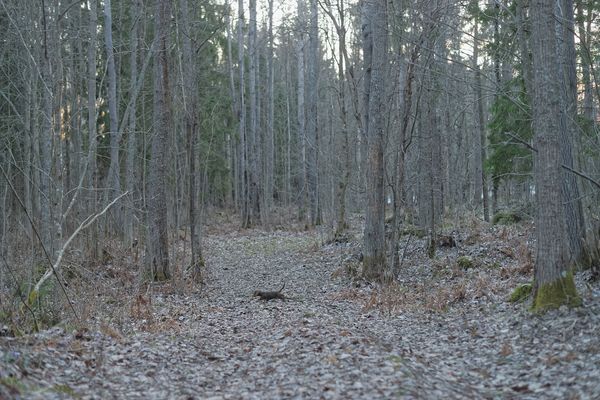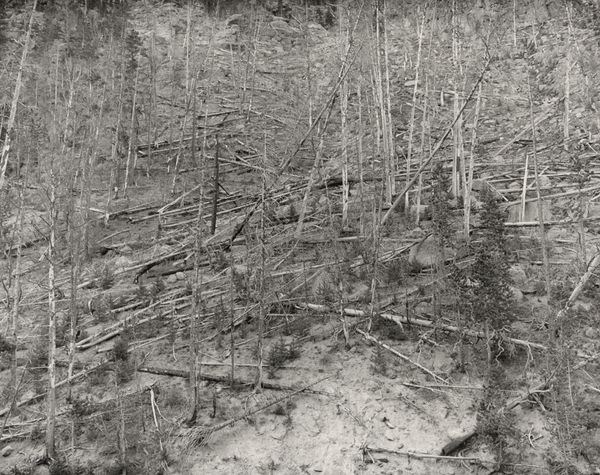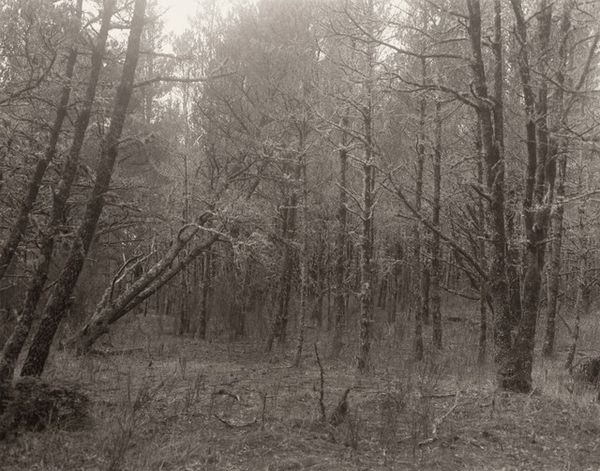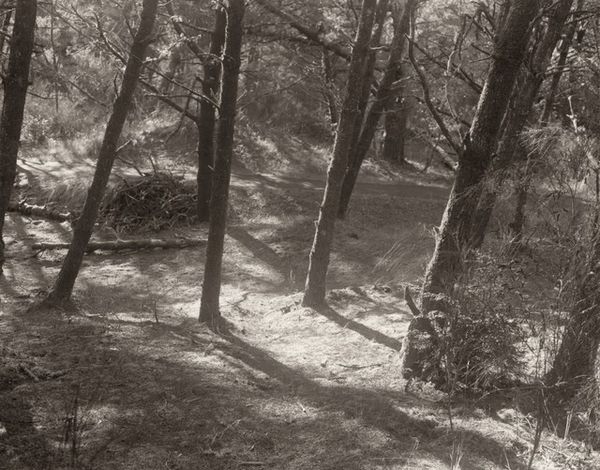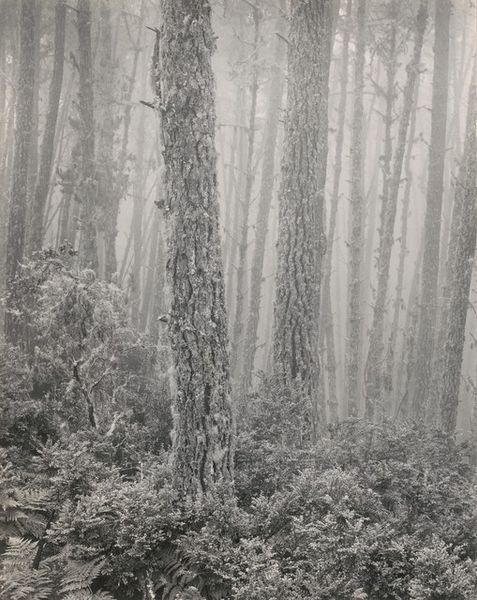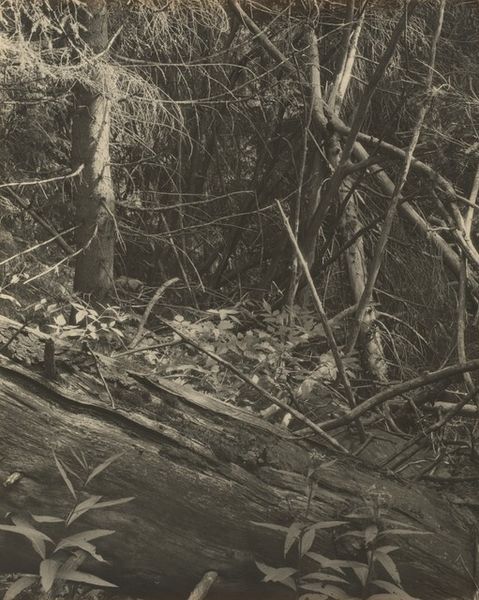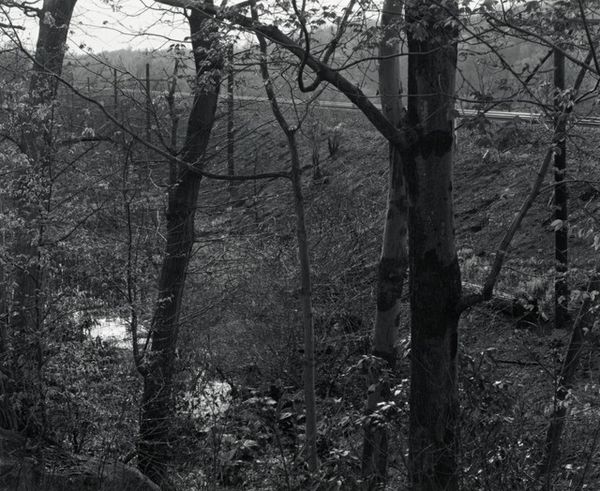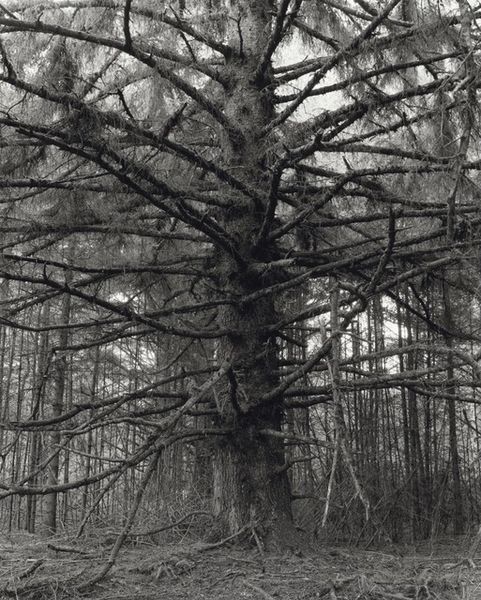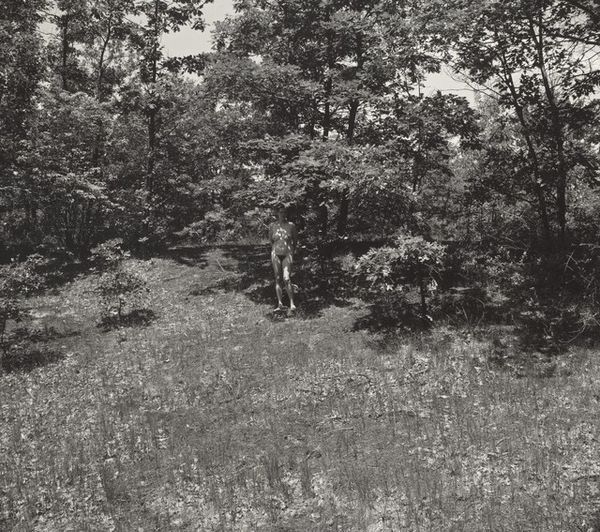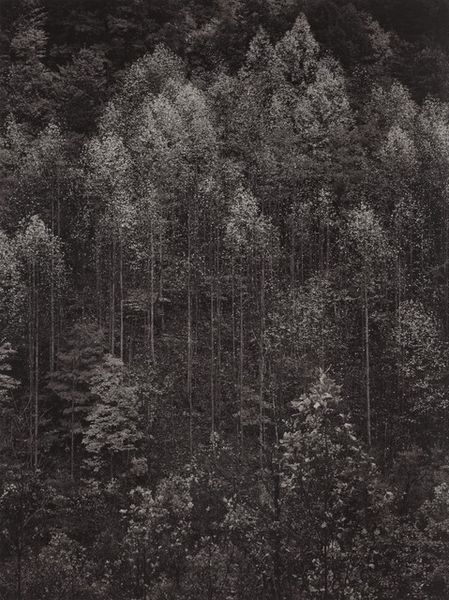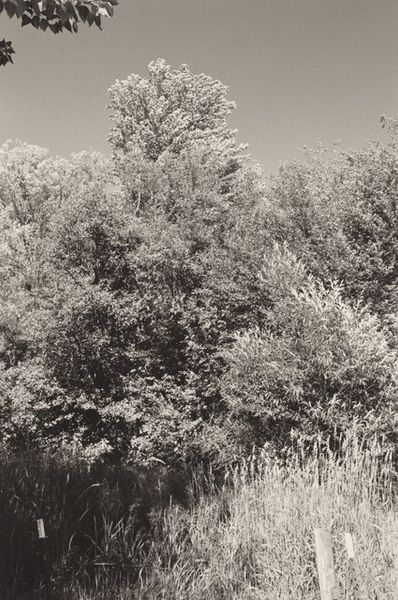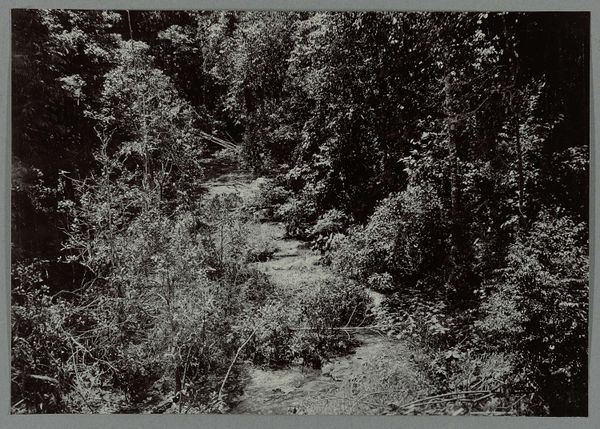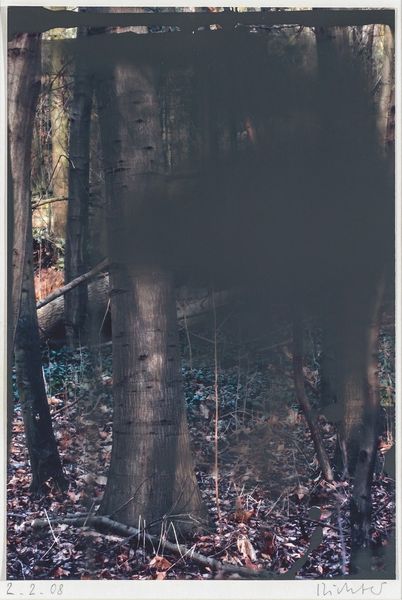
photography, gelatin-silver-print
#
natural shape and form
#
snowscape
#
countryside
#
landscape
#
eerie mood
#
photography
#
gelatin-silver-print
#
gloomy
#
fog
#
natural texture
#
murky
#
natural form
#
realism
#
mist
Dimensions: image/sheet: 20.32 × 25.4 cm (8 × 10 in.)
Copyright: National Gallery of Art: CC0 1.0
Editor: We’re looking at Linda Connor's "Forest, Blue Ridge Mountains, Virginia," a gelatin silver print from 1978. It's striking how dense and almost claustrophobic the composition feels. What stands out to you when you look at this photograph? Curator: The image presents a complex interplay of light and shadow. Notice how the high contrast within the gelatin silver print emphasizes the textures of the bark and foliage, creating a visually rich surface. Connor’s deliberate framing, cropping so tightly, contributes to the overall sense of depth. Editor: I see that, the texture is really incredible, almost tactile. But is it perhaps a little too busy? I find my eye struggling to find a point of focus. Curator: That perceived "busyness" is actually a carefully constructed aspect of the image. It disrupts the traditional landscape expectation of a clear foreground, middle ground, and background. The interplay is foreground versus depth as it dissolves into grayscale, the trees and ground as the subject rather than atmosphere. This is all a kind of constructed formal quality in Linda Connor's decision making. Editor: So, the lack of a clear focal point is intentional, meant to challenge our expectations of landscape photography? Curator: Precisely. The visual tension between the details and the overall composition pushes us to examine the materiality of the photograph itself. Consider the contrast and tonal range - the interplay is constructed to reveal formal ideas within a landscape scene, as opposed to rendering any "beautiful landscape." Editor: That’s a completely different way of seeing it. I was initially put off by what I saw as disorder, but now I recognize how meticulously constructed that disorder is! Curator: Indeed. And that’s the power of a formalist approach; it allows us to move beyond the surface representation to the underlying structure and intent.
Comments
No comments
Be the first to comment and join the conversation on the ultimate creative platform.
